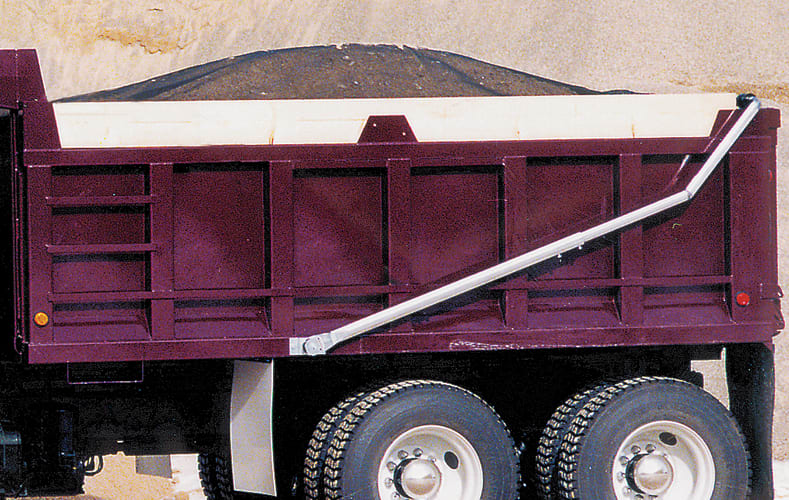
Tarps and tarping systems are essential pieces of equipment for heavy haulers, ensuring materials are safely transported from one site to another. With proper care and maintenance, your tarp and tarping systems can serve your needs for many years.
One of the most frustrating challenges drivers and fleet companies face is downtime due to broken or damaged equipment. Tarping systems can sustain damage from loading and unloading events or other roadside accidents. It’s important for drivers to quickly recognize the damage and take steps to fix them before they spiral into larger issues.
In this article we’ll explore three common issues that should be address by a local service center.
Rips, Tears or Torn Fasteners
Rips or tears in a tarp can occur from sharp materials within your load, wind whip or UV exposure over time. Grommets and pockets that serve as attachment points are a common location for these rips or tears.
Industry standard tarps or manual style tarp operations might get by with repairing minor tears with a tarp repair kit until they can replace a tarp. Structural tarp integrity is more critical for powered or automated tarp systems.
Damage that is more substantial will require a professional consultation to ensure the damage will not spread or if you need to replace the tarp to ensure proper tarp system performance and prevent potential tarp failure which can result in additional system or equipment damage.
Torsion Spring Wear
A torsion spring is a mechanical device that stores and releases rotational energy. They are housed at the base of the tarp arm and are activated when the tarp is rolled up. Depending on the exact tarp system, you likely have between three and five springs mounted on each side of the tarp system. Torsion spring wear can reduce tarp arm tension over time causing uneven tarp operation. It is best to replace all springs at once, ensuring even tension on both sides of your tarp system.
The recommended best practice is to use parts directly from the manufacturer. Cutting corners by using inexpensive aftermarket or foreign look-alike parts will drastically increase the likelihood of your system breaking again.
Damaged Electrical Components
Damaged electrical components or wiring can cause tarp motor malfunction resulting in premature damage. Failures can be caused by excess temperature, mechanical shock, stress or impact. Again, the recommended best practice is to use parts directly from the manufacturer.
It’s also important to highlight the value of a high-quality tarping system. The best systems incorporate a motor with high torquing capability along with a strong warranty.
Truck Tarp Repairs With an Authorized Dealer or Repair Center
Remaining on the road starts with understanding common issues. When you run into challenges with your tarp and tarping system, it’s always best to check with your OEM for their recommendations on replacement parts.
Repairs are often needed at less-than-ideal times or locations. Take the time to pre-qualify potential service centers to reduce stress and minimize downtime. If your trailer’s tarp or tarping system start to display issues, get to an authorized dealer or repair center quickly.
Consultations and on-site services for tarp and safety solutions are available through Roll-Rite's Safe Fleet Service Centers. You may contact our experts directly for quotes or more information. When you're ready to replace a mesh tarp, Shop Rapid Tarp™ Replacement Tarps for fast ship replacement tarps featuring commonly stocked sizes for trucks and trailers!
ABOUT THE AUTHOR
Brent Fannin
National Sales Manager, Construction and Municipal
Brent has extensive trucking industry experience including years of hands-on experience involving truck equipment applications.

 English
English  Français
Français  Deutsch
Deutsch  Nederlands
Nederlands  Français
Français  English
English  English
English 

